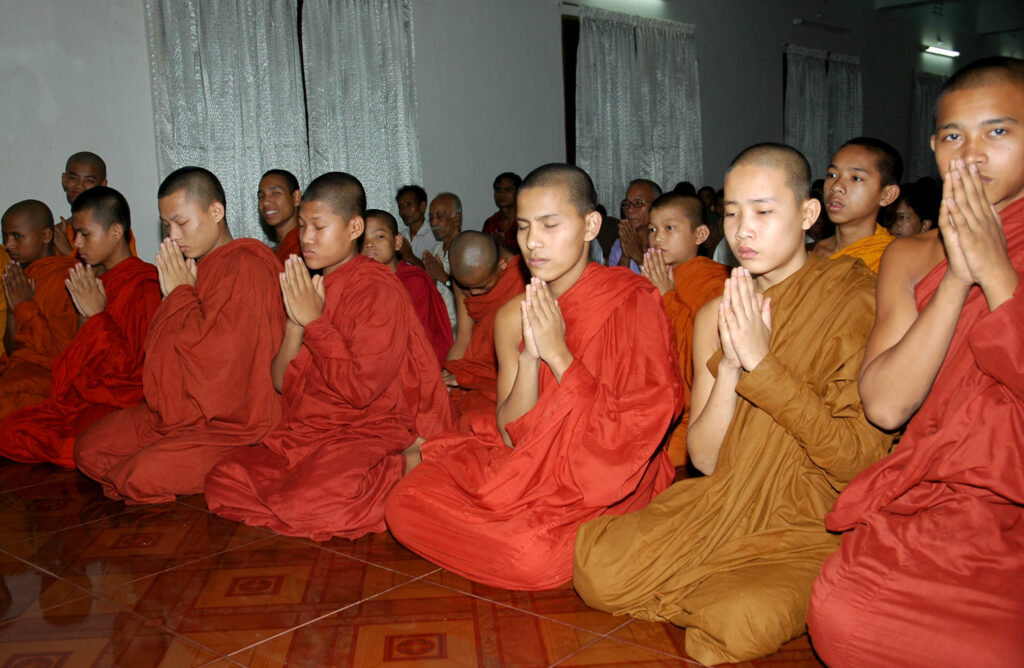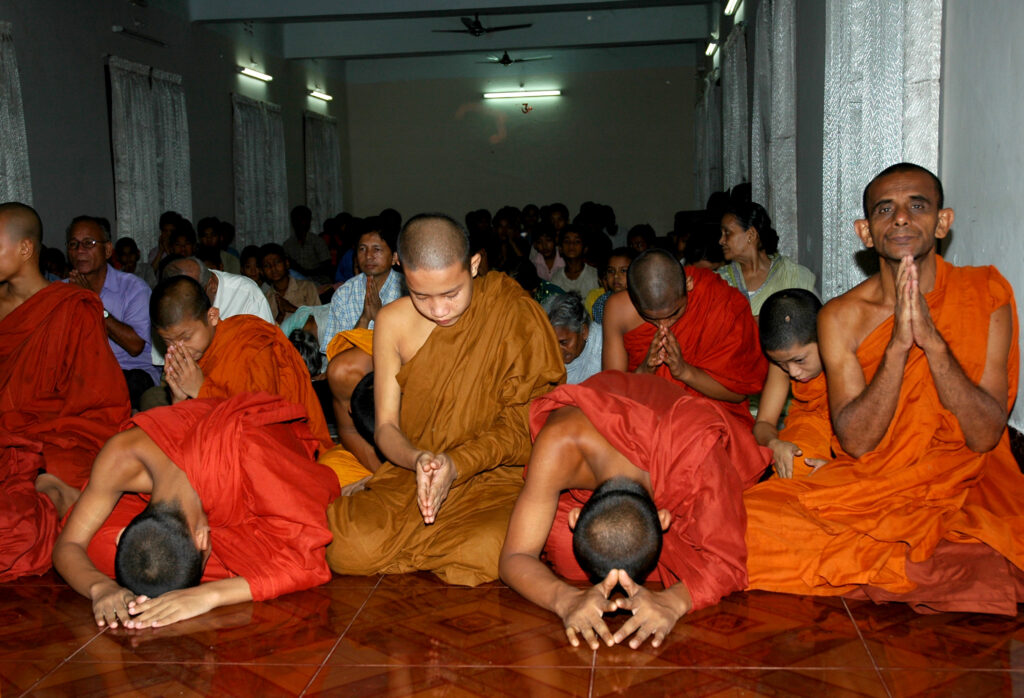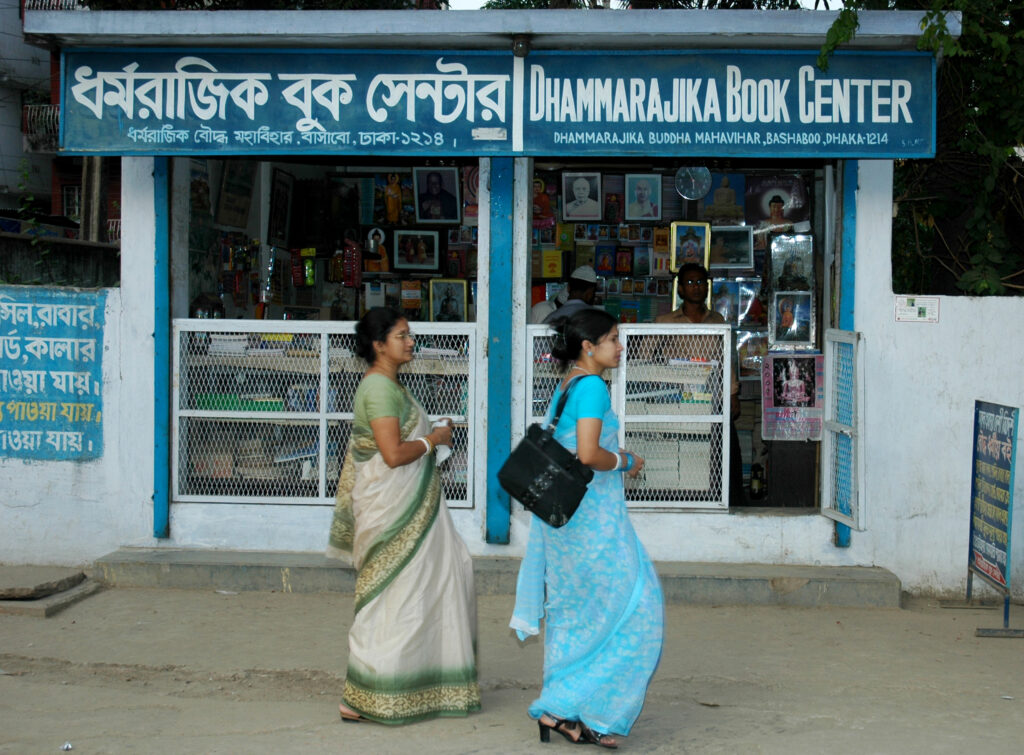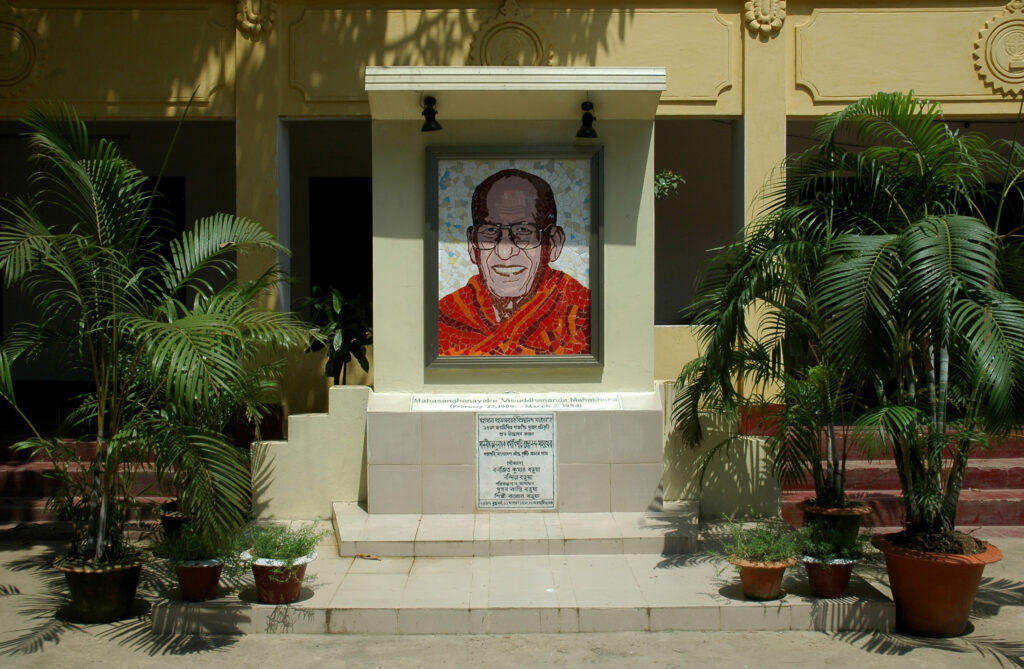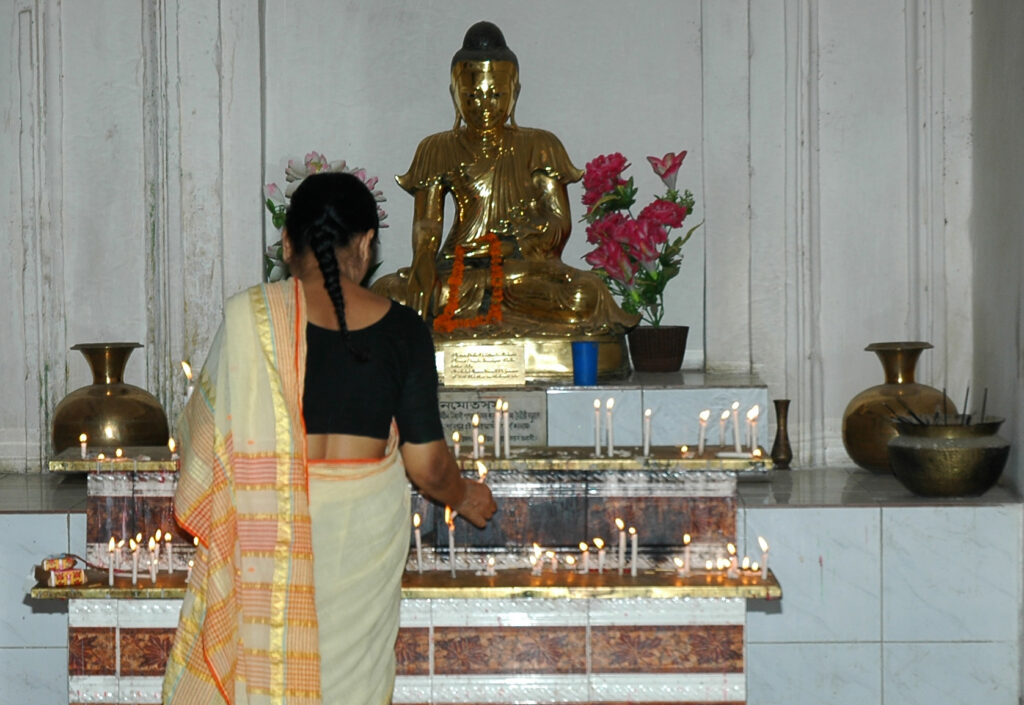One important recent achievement for the Dhaka City’s Buddhists community was the return of the ashes of Atisa Dipankar to Bangladesh from Tibet several decades ago in the 1970s. Atisa was a Buddhist scholar, born in Vikrampura in Munshiganj District, who travelled to Tibet around the year 1040 by foot with a group of scholars to spread the message of Buddhism. He was invited to go there by the then Buddhist king of Tibet, Lah Lama Yiyosi Hod.

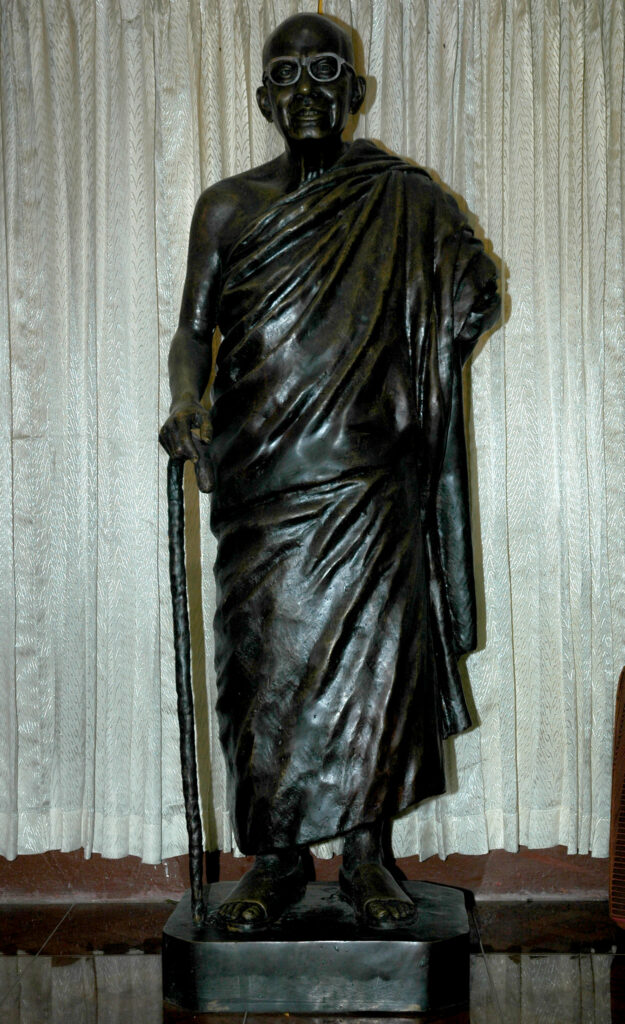
Before 11 July 1960 when this temple complex site was acquired, the Buddhist community in Dhaka did not have any adequate, convenient and meaningful place for worship or to carry out their cultural and religious functions and ceremonies. The founder of this institute, Suddhananda Mahathero, led a delegation to meet Azam Khan, the then governor of East Pakistan, to request the allocation of a piece of land for the local Buddhist community.
The current site was a garden house of a zamindar (landlord), which was acquired by the government for their railway development programme. However, as a result of the lobby, the government carved out a small piece of the land and allocated it to the Buddhist community. This was the beginning of this religious, educational and cultural centre for Dhaka’s Buddhists.
The temple development programme is still in work-in-progress and the main temple shape will take place when the fourth floor is completed. There will be a library, a museum, and space and facilities for counselling and running inter-faith dialogues on the fourth floor.
According to the current Suddhananda Mahatthero, although the majority of the city’s Buddhists come from Chittagong some are from Noakhali and Comilla. The centre caters for a range of the needs of the community, including organising the main annual Buddha Purnima, a combined 3-day festival celebrating the birthday of Buddha and the day when he achieved enlightenment. There are daily prayer ceremonies and a school, kindergarten, Lalitkala Fine Arts and an orphanage at the complex.
About the future of Dhaka, Suddhanandan feels confident that the city has a bright future. He has watched the city’s development since the 1950s when he first came to Dhaka. Although he is happy that there has been continuous progress made regarding city development, he feels that flooding becomes a major problem frequently and that something needs to be done quite urgently to minimise the impacts of the rising waters.


